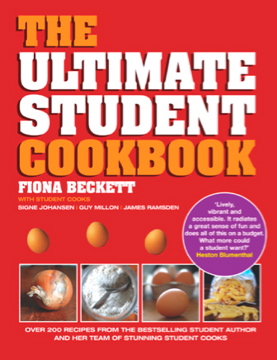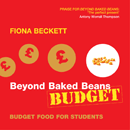Site search |
Sam Bompas and Harry Parr's Glow in the Dark Gin'n'Roses Jelly While not strictly for Hallowe'en we thought you might like to have a
bit of fun with this spooky fluorescent jelly from jellymongers Bompas
& Parr While not strictly for Hallowe'en we thought you might like to have a
bit of fun with this spooky fluorescent jelly from jellymongers Bompas
& Parr Sam writes: With jelly half the fun lies in the spectacle. If you serve it people always enjoy the wobble. But that’s expected. No-one is surprised by a wobbly jelly. To really bowl them over you have to sex it up a lot. One way of doing this is to make it glow in the dark! In the summer of 2009 we were commissioned to create the most outlandish menu imaginable to be served on a Pullman train carriage that toured the country. The train carriage was run by Hendrick’s Gin and curious visitors were plied with fine alcohol. The most interesting visitors were invited to a banquet hosted in the carriage each evening which they were assured would be the most peculiar meal of their life. We wanted to use the gin as part of a jelly that took people by surprise and ambushed their senses. Weird tasting jelly would be too obvious and ultimately not nice! Visual trickery was the key. The previous year we had worked with Dr Andrea Sella, an explosives expert at UCL, developing up glow in the dark jellies. We decided to use the techniques developed in his lab. for maximum impact on the carriage. The dinner guests went wild for it. To make the jelly glow in the dark, food-safe quinine is included as an ingredient and UV black lights around where they are served cause the jellies to fluoresce. The invisible ultraviolet light from the black lights is absorbed by the quinine which then re-emits bluish light at the edge of the visible spectrum, making the jellies appear to glow in the dark. Dr. Sella explains the phenomenon like this: Fluorescence is one of those truly magical atomic phenomena – an optical illusion that makes things look brighter than they are, making it central not only to safety equipment, but also to detergents and cleaning agents to give that “white than white” look. All manner of materials fluoresce. The quinine molecule, itself, is a natural product from the bark of the South American Cinchona tree that has been added to drinks for over a century. One of the first anti-malarial molecules, it began to be used by the British in India as a cure for fevers. The drug could be made more palatable by judicious addition of sugar and alcohol. Nowadays, the malaria parasite is resistant to quinine, but its bitterness adds a pleasant “bite” to the flavour of many soft drinks and mixers. And the blue glow is a delightful effect that adds ambiance to pubs and clubs. But if you don’t like the glow there’s a simple say to switch it off – simply toss a pinch of salt into your cocktail and kill the effect in an instant. To be really effective you need total darkness save for the UV light. As we were running the carriage banquets on summer nights in a train carriage with no blinds there was a good deal of ambient light well into the evening. We tricked out the dinning table in the carriage with a hidden UV light underneath it. When it came to dessert course guests were encouraged to hold their plates in the relative darkness under the table to see the glow. The jellies sprang into vivid glowing colours. Most peculiar was not the glowing jelly but watching all the guests holding their plates under the table! serves 4 For the jelly 200ml Hendrick’s Gin (obviously you can use other kinds) 200ml Indian tonic water 100ml Water 50g Caster sugar A splash of Rose Water 5 Leaves gelatine For the raspberry coulis 55g Raspberries 1⁄2 Lemon, juice only 5g Icing sugar For the glow UV Black Light (available from hardware shops or find an online supplier) To make the jelly 1. Combine the Hendrick’s Gin and indian tonic water in a large measuring jug and set aside. 2. Cut the leaf gelatine into fine pieces and place in a heat-proof bowl with enough G&T to submerse. Leave until soft (roughly 5 minutes). 3. When the gelatine has softened, melt it (still in heat proof bowl) over a pan of simmering water. At the same time melt the caster sugar in 50ml of water. 4. Add the caster sugar solution to the melted gelatine mix. Then combine this with the Hendrick’s Gin/tonic water jug and stir. To make the coulis 5. To make the coulis, place the raspberries, lemon juice and icing sugar into a food processor until smooth. 6. Strain the coulis into a small bowl. Presentation 8. Unmould the jelly by briefly immersing in a bowl of hot water and inverting over your chosen plate. Spoon the coulis around the base of the jelly. TIP: Wet the surface of the presentation plate before unmoulding the jelly onto it. If the jelly is not in the right place you will be able to slide it into position. 9. For maximum effect turn off all lights to achieve total darkness. Switch on your blacklight and serve the glowing jelly to thrilled diners. So why does the jelly glow? The quinine in the tonic water is UV-active. When the blacklight is switched on it will fluoresce beautifully.  Sam and Harry were both students, Sam at UCL where he read Geography while Harry studied architecture at The Bartlett. They set their business up a couple of years ago creating bespoke jellies and organising spectacular culinary events the most recent of which was a Black Banquet. You can read more about their creations here. Sam and Harry were both students, Sam at UCL where he read Geography while Harry studied architecture at The Bartlett. They set their business up a couple of years ago creating bespoke jellies and organising spectacular culinary events the most recent of which was a Black Banquet. You can read more about their creations here. |



